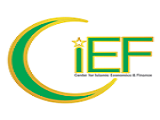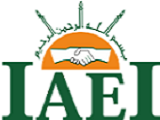Analysis Of Ta’awun Fund Model Best Practice From Indonesia
Abstract
The Muslim population of Indonesia in 2010 reached 207 million, while the number of poor people reached 27,76 million. On the other hand, Indonesia is prone to natural disaster. By 2015 there are 16,830 villages hit by floods, 3,827 villages experiencing earthquakes, and 7,861 villages experiencing landslides. It is important for Indonesian people to pool fundraising to help each other (ta'awun). One of the schemes is through the microtakaful program. The next issue is the inability of the poor Indonesian to pay a pooling fund.
The research is conducted with the aim to analyze the appropriate model of microtakaful in Indonesia using infaq/sadaqah and zakah fund as an alternative payment of subsidy of microtakaful contribution.
The research is conducted with several methods, namely the study of in-depth literature on the utilization of infaq/sadaqah and zakah fund. The proposed models of utilization of infaq/sadaqah and zakah fund to subsidy ta’awun fund, validate the model through interviews to experts, practitioners and fund managers, process the data through Analytic Network Process (ANP), and determine the best model in utilizing infaq/sadaqah and zakah fund to subsidy ta’awun fund. Fund management model to become the object of research are microtakaful model and subsidy fund from the government model.
The study shows that: Firstly, Ta'awun's fundraising in Indonesia is in line with the shariah objectives of protecting the soul, protecting religion, protecting intellect, protecting wealth, and protecting progeny. Secondly, the microtakaful model implemented in Indonesia is a microtakaful model by institution independently, a microtakaful model with a subsidy from infaq/sadaqahfund, a microtakaful model with a subsidy from zakah funds, ta’awun fund management model with a subsidy from the government and microtakaful model with a subsidy from other institution. Third, an important component in microtakaful is aqad, participant, underwriting process, investment, donor party and facility needs. The proper aqad in ta’awunfundraising is mudharabahmusytarakah.The simple Underwriting process is required. Parties that act as donors are zakah institution and government. Participants as beneficiaries of the contribution are poor and needy.
Keywords : Microtakaful, Ta'awun, Zakah, Infaq, Sodaqah
Keywords
Full Text:
PDFReferences
Abdelkader, I.B., Salem, A.B.(2013). Islamic Vs Conventional Microfinance Institutions: Performance Analysis in MENA Countries. International Journal of Business and Social Research (IJBSR), Volume -3, No.-5.pp:219-233
Ahmed, M.H.(2016). Micro Takaful Insurance As A Tool To Guaranteeing Financing And Protecting Micro Enterprises. Journal of Business & Financial Affairs Volume 5. pp. 1-11.
Ascarya, et al (2016). Holistic Financial Inclusion Based On Maqashid Shariah Through Baitul Maal Wa Tamwil. Workshop on Islamic Finance: Regional Perspectives, National University of Singapore, Singapore, 16-17 February, 2016.
Ascarya. (2013). The Persistent Lack Of Profit And Loss Sharing Financing In Indonesia’s Islamic Banks. International Journal of Islamic and Middle Eastern Finance and Management.
Ascarya. (2014). In Search Of Sustainable Conventional And Islamic Microfinance Models For Micro Enterprises. Forum Riset Syariah 2014.
Ascarya, et al (2015). Designing Holistic Financial Inclusion Based On Maqashid Shariah. Inaugural Annual Symposium on Islamic Finance 2015 “Islamic Finance: A Catalyst for Shared Prosperity”. Istanbul.
Aziz, A dan Mohamad, S. (2013). Fulfillment of Maqashid Al-Shariah via Takaful. Munich Personal RePEc Archive MPRA Paper No. 47776, posted 24. June 2013 04:05 UTC. Pp.5-7
Badan Amil Zakat Nasional.(2016). Buku Statistik Zakat Nasional 2015.
Badan Amil Zakat Nasional.(2017). Buku Statistik Zakat Nasional 2016.
Badan Pusat Statistik. (2015). Statistik Desa yang Mengalami Bencana Alam. Jakarta, DKI : Penulis.
Badan Pusat Statistik. (2016). Berita Resmi Statistik: Profil Kemiskinan di Indonesia September 2015. No. 05/01/Th. XIX. Jakarta, DKI : Penulis.
Badan Pusat Statistik. (2017). Berita Resmi Statistik: Profil Kemiskinan di Indonesia September 2016. No. 05/01/Th. XX. Jakarta, DKI : Penulis.
Bakhtiari, S. (2013). Microinsurance And Microtakaful: Strategies For Poverty Reduction Towards Sustainable Development. OIDA International Journal of Sustainable Development. pp. 93-100
Erlbeck, A., et al. (2011). Microtakaful: Field Study Evidence And Conceptual Issues. http://www.rug.nl/research/globalisation-studies groningen/research/conferencesandseminars/conferences/eumicrofinconf2011/papers/13.erlbeck-altuntas-berrystolzle.pdf. pp. 1-29.
Fatwa Dewan Syariah Nasional Majelis Ulama Indonesia No 53/DSN-MUI/III/2006 tentang Akad Tabarru’ Pada Asuransi Syariah.
Forum Zakat. (2012). Cetak Biru Pengembangan Zakat di Indonesia 2011-2015. Jakarta: Forum Zakat.
Gor, N. (2013). Microtakaful-Islamic Insurance For Deprived: Innovation, Sustainability And Inclusive Growth. International Journal of Business, Economic and Law Vol. 3, pp. 18-24.
Hasim, H. M. (2014). Microtakaful as an Islamic Financial Instrument, for Poverty Alleviation in Iraq. Middle East Journal of Scientific Research, 21(12), 2315-2325.
IFSB dan IAIS. (2015). Issues In Regulation And Supervision Of Microtakāful (Islamic Microinsurance).
Iqbal, Z. (2014). Enhancing Financial Inclusion through Islamic Finance. Paper, presented at Financial Inclusion Conference, Turkey.
Ismal, R. 2013. Islamic Banking in Indonesia : New Perspective on Monetary and Financial Issues. Singapore: John Wiley and Sons Singapore Pte.Ltd.
Kailani, M.I., (1998). The Book of Zakat (Precepts Dealing with Poor Due). Riyadh:Darussalam.https://d1.islamhouse.com/data/en/ih_books/single2/en_The_Book_of_Zakaat.pdf
Karim Consulting Indonesia. (2017). Islamic Insurance Outlook 2017.
Kementerian Agama RI, Direktorat Jenderal Bimbingan Masyarakat Islam, Direktorat Pemberdayaan Zakat. (2013). Standarisasi Amil Zakat Di Indonesia Menurut UU No 23 Tahun 2011 Tentang Pengelolaan Zakat.
Masrifah, A. R. (2016). Efisiensi BMT Pesantren dalam Pengelolaan Harta Usaha Mikro. Tesis. Sekolah Tinggi Ekonomi Islam Tazkia. Tidak diterbitkan.
Musari, K. 2015. Sukuk For Microfinance Through Linkage Program: Case Study In Indonesia. The 10th International Conference Islamic Economic And Finance (ICIEF) Institutional Aspects of Economic, Monetary and Financial Reform. Pp 1-12
Patel, S. (2004). Takaful and Poverty Alleviation. ICMIF. United Kingdom.
Patel. (2012). Mikrotakaful : Time To Make A Real Difference To People’s Livelihoods.
Pew Research Center’s Forum on Religion & Public Life. (2011). The Future of the Global Muslim Population Projections for 2010-2030.
Puskas BAZNAS.2016. Outlook Zakat Indonesia 2017. Puskas BAZNAS. Jakarta.
Qardawi, Y. (1991). Hukum Zakat : Studi Komparatif Mengenai Status dan Filsafat Zakat Berdasarkan Quran dan Hadits. Jakarta : Litera Antarnusa.
Qardawi, Y. (2006). Hukum Zakat Cetakan ke-9. Bogor :Pustaka Litera AntarNusa.
Rom, N. A. M., Rahman, Z. A. (2012). Financial Protection for the Poor in Malaysia : Role of Zakah and Micro-takaful. JKAU: Islamic Econ, Vol. 25 No. 1, pp. 119-140.
Rusydiana, A., Devi, A. (2017). Development Strategy of Micro-takaful Institutions: Case Study Working Group Indonesia. Etikonomi Volume 16 (2), Oktober 2017 P-ISSN: 1412-8969; E-ISSN: 2461-0771, pp. 265 – 278. http://journal.uinjkt.ac.id/index.php/etikonomi.
Saaty dan Vargas. (2006). Decision Making With The Analytic Network Process Economic, Political, Social And Technological Applications With Benefits, Opportunities,Costs And Risks. USA: Springer.
Sarwat, A. (2016). Seri Fiqih Kehidupan : Zakat. Rumah Fiqih Publishing: Jakarta.
Sukmana, R., Hidayat, S.E. (2014). Challenges and Opportunities in Developing Microtakaful in Muslim Majority Country: A Case Study of Indonesia. The 11th Harvard University Forum on Islamic Finance. pp. 1-14
Suryanto, T., Purnamasari, F., & Kurniawan, M. (2018). Tax Revenue and Disparity: How to Improvement Income Inequality in Islamic Perspective. Asian Journal of Social Sciences and Management Studies, 5(2), 65-71.
Sula, M.S.(2016). Principles Of Islamic Insurance (Prinsip-Prinsip Asuransi Syariah) Life, General and Social Insurance. Syakirsula Institute: Depok.
Surat Edaran Otoritas Jasa Keuangan No 9/SEOJK.05/2017 Tentang Produk Asuransi Mikro dan Saluran Pemasaran Produk Asuransi Mikro.
Swartz, N.P. and Coetzer, P. (2010). Takaful: An Islamic insurance instrument. Journal of Development and Agricultural Economics, 2(10), pp. 333-339, October, 2010. Available at http://www.academicjournals.org/JDAE
Syahatah, H.(2004). Akuntansi Zakat : Panduan Praktis Penghitungan Zakat Kontemporer. Pustaka Progressif : Jakarta.
Takaful Insurance of Africa. (1 November, 2012). Slideshare. Retrieved from Takaful: An Opportunity to Extend the Provision of Microtakaful: http://www.slideshare.net/icmifmicroinsurance/takaful-an opportunity-to-extend-the-provision-of-microtakaful. Diakses tanggal 29 April 2017
Tanjung, H., Devi, A. (2013). Metodologi Penelitian Ekonomi Islam. Jakarta. Gramata Publishing.
DOI: http://dx.doi.org/10.24042/febi.v3i2.3497
Refbacks
- There are currently no refbacks.
Copyright (c) 2019
Ikonomika : Jurnal Ekonomi dan Bisnis Islam is a Journal of Islamic Economics and Business, Published by the Faculty of Islamic Economics and Business at UIN Raden Intan Lampung Indonesia. This work is licensed under a Creative Commons Attribution-ShareAlike 4.0 International License.






11.png)


